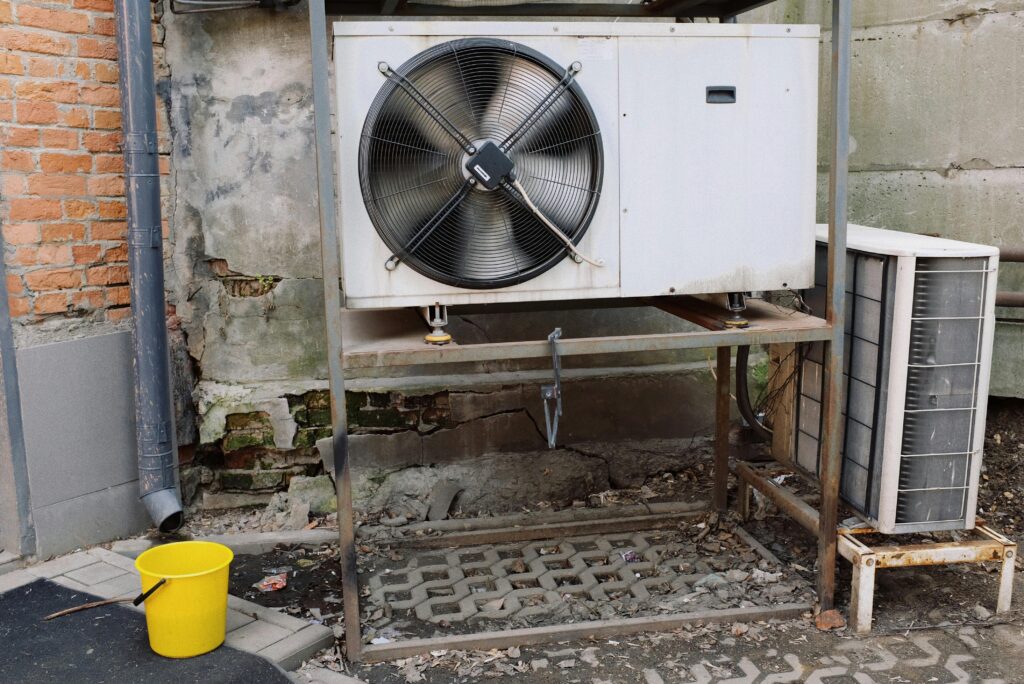Air conditioners are essential for maintaining comfort in our homes, especially during the hot summer months. Among the various models available, the YEX382V3YTE air conditioner is known for its efficiency and reliability. However, like all appliances, it can sometimes experience issues that require repair. This comprehensive guide will walk you through the steps needed to repair the YEX382V3YTE air conditioner effectively.
Understanding Common Issues with the YEX382V3YTE Air Conditioner
Before diving into the repair process, it’s important to understand some common problems that can affect the YEX382V3YTE air conditioner:
- Poor cooling performance: This is often due to dirty filters, low refrigerant levels, or a malfunctioning compressor.
- Strange Noises: Unusual sounds can indicate issues with the fan motor, loose parts, or debris in the unit.
- Water Leaks: Leaks usually result from blocked drainage pipes or an overfilled drip pan.
- Electrical Problems: These can include issues with the thermostat, circuit board, or wiring.
- Ice buildup is often caused by low refrigerant, poor airflow, or a dirty evaporator coil.
Tools and Materials Needed
To repair your Repair the YEX382V3YTE Air Conditioner, you will need the following tools and materials:
- Screwdrivers (Phillips and flathead)
- Multimeter
- Replacement parts (if necessary)
- Cleaning supplies (vacuum, soft brush, mild detergent)
- Refrigerant (if required)
- Insulation tape
- User manual for the YEX382V3YTE model
Step-by-Step Repair Guide
1. Safety first
Before starting any repair, ensure the air conditioner is turned off and unplugged to avoid any electrical hazards. If you’re working with refrigerant, wear protective gloves and goggles.
2. Diagnose the problem.
To effectively repair the YEX382V3YTE air conditioner, accurately diagnose the issue:
- Check the Air Filter: A clogged filter can restrict airflow, leading to poor cooling. Remove and clean the filter, or replace it if it’s damaged.
- Inspect the thermostat: Ensure the thermostat is set to the correct temperature and functioning properly. Use a multimeter to check for electrical continuity.
- Examine the Circuit Board: Look for any burned or damaged components on the circuit board, which could indicate electrical issues.
3. Cleaning and Maintenance
Regular cleaning and maintenance can prevent many common issues.
- Clean the Coils: Dirty coils can reduce efficiency. Use a soft brush or vacuum to remove dust and debris from the evaporator and condenser coils.
- Clear the Drainage System: Ensure the drainage pipe and drip pan are clear of blockages. Clean them with mild detergent and water.
- Lubricate Moving Parts: Lubricate the fan motor and other moving parts to reduce noise and ensure smooth operation.
4. Refrigerant Issues
Low refrigerant levels can cause poor cooling performance and ice buildup.
- Check for leaks: Inspect the refrigerant lines for any signs of leaks. If you find a leak, it’s best to call a professional to handle the refrigerant replacement.
- Recharge the refrigerant: If the refrigerant is low but there are no leaks, you can recharge it yourself. Follow the instructions in the user manual for the correct type and amount of refrigerant.
5. Repairing Electrical Problems
Electrical issues can be more complex and may require professional assistance.
- Test the Capacitor: Use a multimeter to check the capacitor for proper functionality. Replace it if it’s faulty.
- Inspect the wiring: Look for any loose or damaged wires and repair or replace them as needed. Ensure all connections are secure.
- Replace the Circuit Board: If the circuit board is damaged beyond repair, you may need to replace it. Follow the manufacturer’s instructions for installing a new board.
6. Addressing Ice Build-Up
If you notice ice buildup on your YEX382V3YTE air conditioner, take these steps:
- Defrost the Unit: Turn off the air conditioner and let the ice melt. This can take several hours.
- Check airflow: Ensure nothing is obstructing the airflow around the unit. Clean the filter and coils to improve airflow.
- Monitor Refrigerant Levels: Low refrigerant levels can cause ice buildup. Check the levels and recharge if necessary.
When to call a professional
While many repairs can be done at home, some issues require professional expertise.
- Major Refrigerant Leaks: Handling refrigerant requires special equipment and certification.
- Compressor Problems: The compressor is a critical component, and repairing or replacing it can be complex.
- Persistent Electrical Issues: If you can’t resolve electrical problems, it’s best to call a licensed electrician.
Preventive maintenance tips
Regular maintenance can extend the life of your YEX382V3YTE air conditioner and prevent future issues.
- Change Filters Regularly: Replace or clean the air filter every 1-3 months, depending on usage.
- Schedule Annual Inspections: Have a professional inspect your air conditioner annually to catch any potential problems early.
- Keep the Unit Clean: Regularly clean the coils, drainage system, and exterior of the unit to maintain efficiency.
Conclusion
Repairing the YEX382V3YTE air conditioner can be straightforward if you follow the steps outlined in this guide. By diagnosing the problem, performing regular maintenance, and knowing when to call a professional, you can keep your air conditioner running smoothly and efficiently. Remember, safety should always be your top priority when working with electrical appliances.
For more detailed information and specific instructions, always refer to the user manual that came with your YEX382V3YTE air conditioner. By staying proactive and attentive to your air conditioner’s needs, you can enjoy a cool and comfortable home all year round.
2/2
4o
Write the article in 1200 words, proper heading this keyword: scimitar drum” to the anchor.
2/2
ChatGPT
Exploring the Unique Sound of the Scimitar Drum: A Comprehensive Guide
Musical instruments have always played a crucial role in shaping the cultural landscapes of societies around the world. Among the many fascinating instruments, the scimitar drum stands out for its unique design and captivating sound. This comprehensive guide will delve into the history, construction, playing techniques, and cultural significance of the Scimitar Drum, offering a thorough understanding of this remarkable instrument.
History and Origin of the Scimitar Drum
The Scimitar Drum, named for its resemblance to the curved scimitar sword, has a rich history deeply intertwined with the musical traditions of various cultures. While its exact origins are somewhat obscure, it is believed to have roots in Middle Eastern and North African regions, where it was used in traditional ceremonies, celebrations, and religious rituals.
Construction and Design
The Scimitar Drum is distinct in its design, characterized by its crescent-shaped frame and unique construction materials. Understanding its construction is key to appreciating its sound and functionality.
Frame
The frame of the scimitar drum is typically made from wood or metal and shaped into a curved, crescent form. This distinctive shape not only gives the drum its name but also influences its tonal qualities. The frame is often adorned with intricate carvings or decorative elements, reflecting the cultural artistry of its makers.
Drumhead
The drumhead is usually made from animal skin, such as goat or calf, stretched tightly over the frame. In modern versions, synthetic materials may be used for durability and consistency. The tension of the drumhead can be adjusted to alter the pitch and tone of the drum.
Tuning Mechanism
Traditional scimitar drums often rely on natural tension from the drumhead, but modern versions may include tuning mechanisms such as pegs or screws, allowing for precise control over the drum’s pitch.
Playing Techniques
The scimitar drum is played using a variety of techniques, each contributing to its distinctive sound. Here are some common methods:
Hand Techniques
- Open Stroke: Striking the drumhead with the palm or fingers to produce a resonant, open sound.
- Muted Stroke: Pressing the drumhead with one hand while striking with the other to create a muted, staccato effect.
- Slap: A sharp, percussive sound achieved by striking the drumhead with the fingertips.
Stick Techniques
Some styles incorporate the use of sticks or mallets, offering different tonal possibilities.
- Single Stick: Used for precise, rhythmic patterns.
- Double Sticks: Allows for rapid, alternating strokes, creating complex rhythms.
The Sound of the Scimitar Drum
The sound of the scimitar drum is what truly sets it apart from other percussion instruments. Its crescent shape and the materials used in its construction contribute to a rich, resonant tone that can range from deep, thunderous beats to high, piercing slaps. This versatility makes it suitable for a wide array of musical genres, from traditional folk music to contemporary fusion styles.
Cultural Significance
The Scimitar Drum holds significant cultural value in the regions where it originated and beyond. It is often used in ceremonies, religious rituals, and celebrations, symbolizing various aspects of the community’s heritage and traditions.
Ceremonial Use
In many cultures, the scimitar drum is integral to ceremonial practices such as weddings, religious festivals, and rites of passage. Its powerful sound is believed to ward off evil spirits and bring blessings to those involved in the ceremony.
Folk Music
The scimitar drum plays a central role in traditional folk music, providing the rhythmic foundation for dances and vocal performances. Its unique sound complements other traditional instruments, creating a rich tapestry of musical expression.
Modern Applications
In recent years, the scimitar drum has found its way into contemporary music scenes around the world. Musicians and composers are drawn to its distinctive sound and versatile playing techniques, incorporating it into various musical genres.
Fusion Music
The scimitar drum is increasingly used in fusion music, blending traditional sounds with modern genres such as jazz, rock, and electronic music. This fusion creates innovative and exciting musical landscapes that appeal to a broad audience.
Solo Performances
Solo percussionists have also embraced the scimitar drum, showcasing its full range of tonal possibilities and complex rhythms in solo performances. These performances highlight the drum’s versatility and the skill required to master it.
Learning to play the scimitar drum
For those interested in learning to play the scimitar drum, here are some steps to get started:
Finding an instrument
Purchasing a high-quality scimitar drum is the first step. Look for reputable makers who use traditional materials and techniques. Modern versions with tuning mechanisms can also be a good choice for beginners.
Basic Techniques
Begin by learning basic hand and stick techniques. Practice open strokes, muted strokes, and slaps to develop a range of sounds. Gradually incorporate more complex rhythms and patterns as you become more comfortable with the instrument.
Instructional Resources
Seek out instructional resources such as books, online tutorials, and classes. Learning from experienced players can provide valuable insights and accelerate your progress.
Joining a Community
Connecting with other percussionists and musicians can be incredibly beneficial. Join local music groups, attend workshops, and participate in cultural events to immerse yourself in the musical community.



